Something went wrong!
Hang in there while we get back on track
Best attractions in Genoa

When visiting Genoa, be sure to explore the Strade Nuove and their Palazzi dei Rolli. These stunning Renaissance and Baroque palaces, once homes for nobles and state guests, showcase the immense wealth and power of the Genoese aristocracy.

Piazza De Ferrari is the vibrant heart of Genoa - a spacious, almost entirely traffic-free square that serves as the economic and cultural center of the city. The striking bronze fountain designed by architect Giuseppe Crosa di Vergagni and the magnificent architecture of the surrounding buildings, including Palazzo Ducale and Teatro Carlo Felice, have shaped the square's appearance since the 19th century.

Located in the Porto Antico area, the aquarium is a must-see in Genoa. With over 12,000 animals across 600 species, the aquarium showcases a spectacular array of marine life. You can marvel at sharks, turtles, penguins, and rare species like manatees in habitats that closely resemble their natural homes.

The majestic Cattedrale di San Lorenzo has shaped the skyline of Genoa since the 12th century and impresses with its characteristic black-and-white striped facade - a symbol of medieval nobility. In this stunning church, which combines various architectural styles from Romanesque to Gothic to Renaissance, you can admire not only valuable art treasures but also a curious war relic: an unexploded bomb from World War II. The 60-meter-high bell tower is one of the tallest in Liguria, while inside, Gothic columns, baroque decorations, and significant frescoes like the "Last Supper" by Lazzaro Tavarone testify to the cathedral's rich history.

In the largest maritime museum in the Mediterranean, you can experience the maritime history of Genoa up close - from historical documents signed by Christopher Columbus to a lifelike replica of a Genoese galley. The museum, which opened in 2004, is located in the historic Galata district, where a significant Genoese community lived and warships were built until the 15th century.

In the mighty Palazzo Ducale, the former seat of the Doges of the Republic of Genoa, 700 years of vibrant history merge into a unique architectural ensemble. The palace, which began construction in the late 13th century, was named in 1339 with the election of the first Doge, Simone Boccanegra, and was rebuilt in neoclassical style after a devastating fire in 1777.

The Basilica della Santissima Annunziata del Vastato is considered one of the most important churches of Mannerism and Early Baroque in Genoa, and was praised by Montesquieu in the 18th century as the most beautiful church in the city.
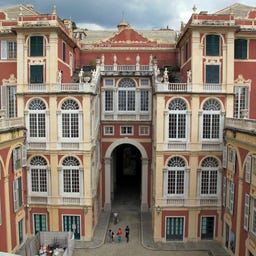
In the magnificent Palazzo Reale, you will experience one of the best-preserved Baroque palaces in Genoa, which has been a UNESCO World Heritage Site since 2006. Built by the Balbi family between 1643 and 1650, the palace was expanded under the Durazzos in the 17th century and later served as the royal residence of the Savoy family.
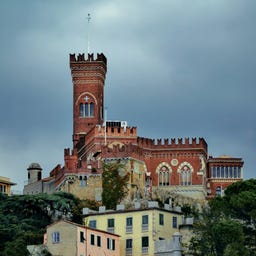
High above Genoa stands the Castello d'Albertis, a neo-Gothic castle from the 19th century that offers you a breathtaking view of the city and the Ligurian Sea. The sailor Enrico Alberto d'Albertis had it built in 1886 on the remains of a 14th-century fortress and filled it with his collections from around the world.
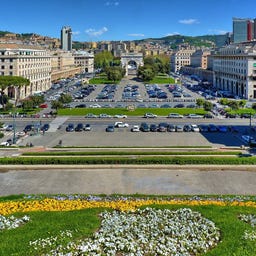
The Piazza della Vittoria is one of the largest squares in Genoa, featuring elegant travertine facades designed by architect Marcello Piacentini in the 1930s. At its center stands the impressive Arco della Vittoria, a monument dedicated to the fallen of World War I.
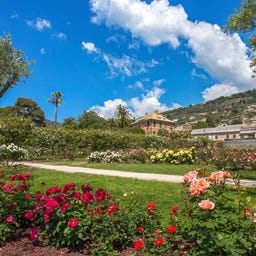
In the historic Parchi di Nervi, you'll find an expansive botanical garden covering 92,000 m², stretching between the Via Aurelia and the sea.
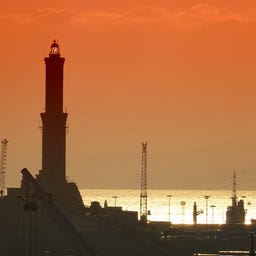
As a prominent landmark, the Lanterna di Genova has overlooked the port of Genoa since the 12th century. Standing at 77 meters, it is the tallest lighthouse in Italy and the Mediterranean. This third-oldest active lighthouse in the world was rebuilt in its current form in 1543 and has withstood numerous historical storms, including wars and French bombings in the 17th century.
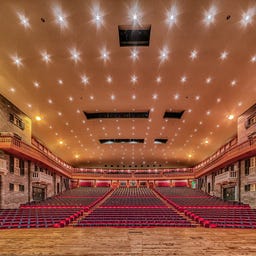
The Teatro Carlo Felice is Genoa's most important opera house and one of the most significant in Italy, located right at the central Piazza De Ferrari. Originally designed in 1828 by Carlo Barabino, the neoclassical building was heavily damaged during World War II and reopened in 1991 with state-of-the-art technology and a distinctive light cone above the foyer.
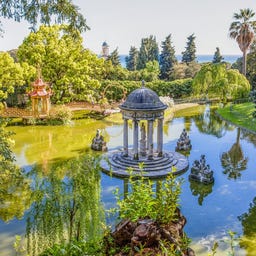
In this nearly 9-hectare historical park from the 19th century, you can expect a fascinating blend of romantic garden art and architectural elements like a neoclassical Temple of Diana, a pagoda, and an Egyptian obelisk.
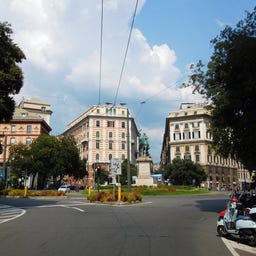
Piazza Corvetto is one of the largest and most elegant squares in Genoa, just a few minutes' walk from Piazza De Ferrari. Named after the Napoleonic politician Luigi Emanuele Corvetto, the square is dominated by an impressive equestrian statue of Vittorio Emanuele II and is lined with well-maintained gardens that lead to the nearby Acquasola Park and Villetta di Negro.
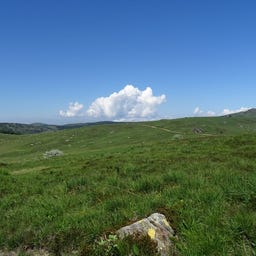
In the protected Parco naturale regionale del Beigua, you will find an impressive natural landscape of metamorphic rock formations and steep cliffs, stretching over nearly 9,000 hectares. As a UNESCO Global Geopark, the area offers not only geological wonders but also prehistoric rock carvings at Alpicella and a diverse wildlife, including Italian wolves and golden eagles.
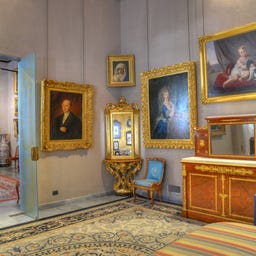
In the impressive Palazzo Rosso, built between 1671 and 1677 by Pietro Antonio Corradi for the Brignole-Sale family, you will find one of the most significant art collections in Genoa. This characteristic red palace has been a UNESCO World Heritage site since 2006 and features magnificent frescoes by notable 17th-century artists such as Domenico Piola and Gregorio De Ferrari.
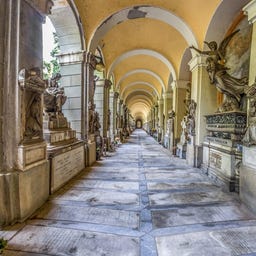
On a hill in the Val Bisagno valley stands the Cimitero Monumentale di Staglieno, the largest cemetery in Genoa and one of the most significant monumental cemeteries in Europe. Opened in 1851, this 33-hectare site impresses with its variety of tomb monuments and sculptures in different styles, ranging from Neo-Gothic to Art Nouveau.
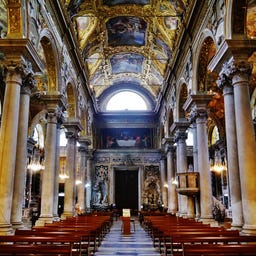
In the Basilica di Santa Maria delle Vigne, one of the oldest Catholic churches in Genoa, you will encounter a fascinating blend of Romanesque, Baroque, and Neoclassical architecture. Originally built as a chapel dedicated to Mary in the 6th century, the structure was expanded into a church around the year 1000 and was granted the status of basilica minor by Pope John Paul II in 1983.
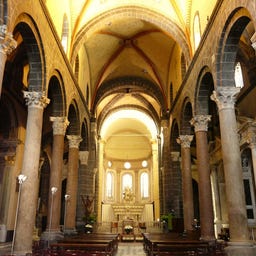
On the hill of Castello, where ancient Genoa once emerged, stands one of the oldest Christian sites in the city. The Chiesa di Santa Maria di Castello impresses with its Romanesque architecture featuring three naves and a façade adorned with a Roman architrave from the 3rd century, showcasing griffin representations.

The impressive Palazzo San Giorgio at the old port of Genoa combines medieval Gothic with Renaissance architecture, reflecting the former power of the maritime republic. Built in the 13th century as the seat of secular authority, the palace gained particular fame as the prison of the explorer Marco Polo and later as the headquarters of the influential Bank of San Giorgio.
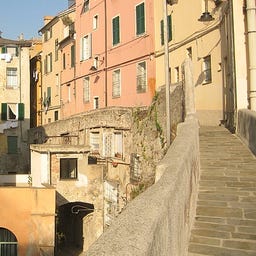
The impressive city walls of Genoa, the Mura di Genova, are a testament to over 2000 years of vibrant city history and still stretch for 4.5 kilometers today. From the 7th century BC to the 16th century, a total of seven different fortifications were built, showcasing architectural styles ranging from Greek to medieval to Baroque. The last and largest expansion, the Mura Nuove, was constructed between 1626 and 1639, extending the defensive structure to nearly 20 kilometers.

In the magnificent Villa del Principe, built in the 16th century as the residence of Admiral Andrea Doria, you will find one of the most significant historical buildings in Genoa.

In the Basilica di San Siro, you encounter one of the oldest places of worship in Genoa, which dates back to the 4th century and once served as the city's first cathedral. After a devastating fire in the 16th century, the church was rebuilt in a Baroque style, with the elegant neoclassical facade by Carlo Barabino added in the 19th century.
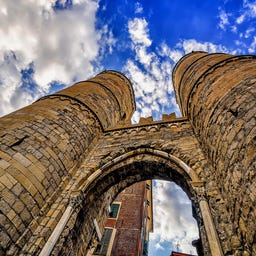
The powerful Porta Soprana is one of the most significant medieval stone structures in Genoa and has stood since the 12th century as a former city gate overlooking the old town. With its distinctive twin towers and Latin inscriptions from 1155 celebrating Genoa's victories in the Mediterranean, it was once the most important gate leading to Rome.
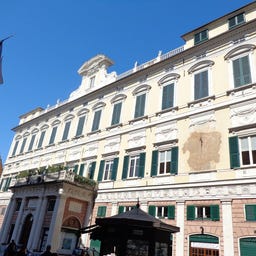
In the heart of Genoa, you will find the Palazzo della Meridiana, an impressive city palace from the 16th century, built by Gerolamo Grimaldi Oliva between 1536 and 1544. This magnificent structure, now part of the UNESCO World Heritage site "Le Strade Nuove," captivates with its artistic frescoes on the northern facade depicting the "Labors of Hercules."
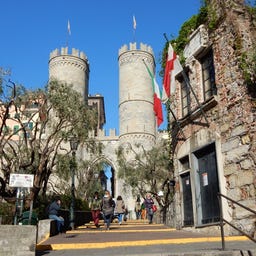
In this simple house near the Porta Soprana, Christopher Columbus spent his youth between 1455 and 1470 before becoming one of the most famous navigators in history. The current building is an 18th-century reconstruction, as the original structure was heavily damaged during a French bombardment in 1684.

In the impressive Palazzo Doria-Tursi, one of the most magnificent UNESCO World Heritage palaces on Via Garibaldi, you will find a unique blend of historic town hall and museum. Built in the 16th century for the banker Niccolò Grimaldi, the palace features the longest facade on the street, adorned with pink stone, black slate, and white Carrara marble.
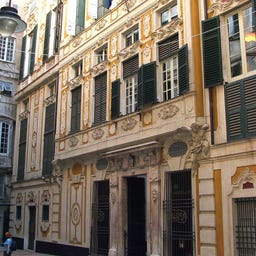
In the magnificent Palazzo Spinola di Pellicceria, you can embark on an authentic journey back to the golden age of Genoese noble palaces in the 16th century. Originally built by Francesco Grimaldi, this palace is part of the famous Palazzi dei Rolli, which hosted high-ranking state guests during the Republic of Genoa and are now a UNESCO World Heritage site.

In the heart of Genoa stands the magnificent Chiesa del Gesù e dei Santi Ambrogio e Andrea, whose history dates back to the 6th century and has been cared for by Jesuits since the 16th century. Designed by Giuseppe Valeriano, the church is notable for its five domes and houses significant Baroque artworks, including paintings by Peter Paul Rubens and frescoes by the brothers Giovanni Battista and Giovanni Carlone.
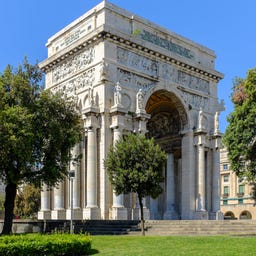
The impressive Arco della Vittoria in Genoa rises 27 meters high and was inaugurated in 1931 as a monument to the fallen soldiers of World War I. Designed by Marcello Piacentini, this triumphal arch combines Roman imperial architecture with design elements from the 16th century and is supported by twelve columns with Doric capitals.
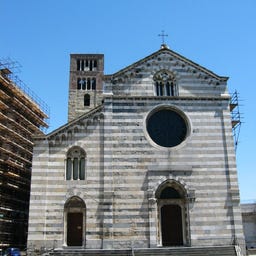
High above the bustling Via XX Settembre stands the Chiesa di Santo Stefano, one of the most significant churches in Genoa, with a history dating back to 972.

In the magnificent Palazzo Bianco, built between 1530 and 1540 for Luca Grimaldi, you will find one of the most significant art collections in Genoa. As part of the UNESCO-protected Palazzi dei Rolli, the palace now houses an impressive gallery of European paintings from the 16th to 18th centuries, including masterpieces by Caravaggio, Rubens, and van Dyck.
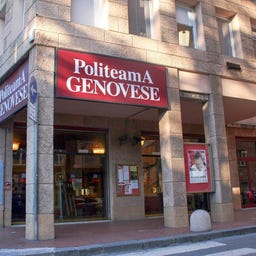
In the heart of Genoa, near the Villetta Di Negro Park, you will find the historic Politeama Genovese - a theater with a history dating back to 1825. What started as a wooden "Teatro Diurno" evolved through several renovations into a modern theater with over 1,000 seats.
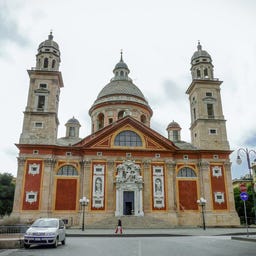
The majestic Basilica di Santa Maria Assunta in Genoa is one of the most significant Renaissance buildings in the city, designed by architect Galeazzo Alessi after the model of St. Peter's Basilica. Construction began in 1552, and its striking Greek cross layout and central dome impress with a bright interior featuring white walls and magnificent Baroque statues by Pierre Puget and Filippo Parodi.
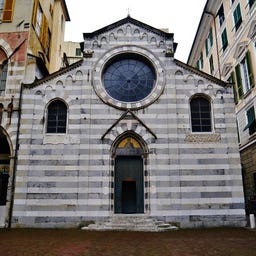
In the medieval Piazza San Matteo, you discover one of the best-preserved Gothic ensembles in Genoa: the Chiesa di San Matteo, founded in 1125 by Martino Doria as a family church and rebuilt in the Gothic style in 1278. The characteristic black-and-white striped marble facade with its large rose window still defines the church's appearance today, which continues to serve as an abbey for the influential Doria family.
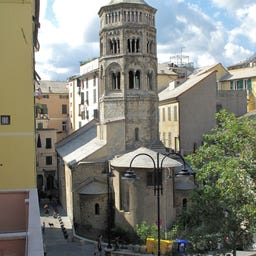
The Chiesa di San Donato is one of the most significant Romanesque churches in Genoa and has been standing in the historic center of the city since the early 12th century. With its simple limestone facade, distinctive octagonal bell tower, and three-nave interior, it offers an authentic glimpse into medieval sacred architecture.

The impressive Stazione Marittima at the historic port of Genoa was not only the gateway to the New World for countless emigrants in the 19th century, but it remains the city's most important cruise terminal to this day. The complex, built in several stages between 1884 and 1930, consists of three interconnected areas that were once strictly separated by passenger class.
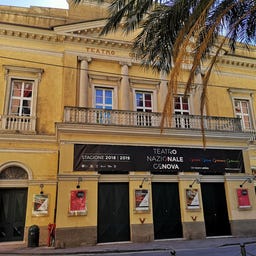
In the elegant district of Sampierdarena, you will discover the Teatro Gustavo Modena, a classic Italian theater from the 19th century, impressive with its neoclassical facade and Ionic columns. Opened in 1857, this building has a rich history - from a celebrated opera house to a cinema, and now it serves as part of the Teatro Nazionale di Genova. In the horseshoe-shaped auditorium with three tiers, which now accommodates 498 visitors, you can still admire the magnificent (partially reproduced) ceiling frescoes by the artist Nicolò Barabino.
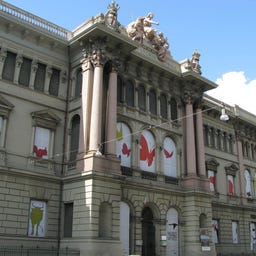
In the Giacomo Doria Natural History Museum, founded in 1867 by its namesake Giacomo Doria, you will find one of the most significant natural history collections in Italy, with around 4.5 million exhibits. On 5,000 square meters of exhibition space, you can see, among other things, the impressive 20-meter-long skeleton of a whale that stranded in 1878 and one of only three preserved specimens of the extinct thylacine in Italy.

The Chiesa di San Pietro in Banchi rises impressively on a grand staircase above the bustling center of Genoa, where it has dominated the Piazza Banchi since the 16th century. The current church, built between 1572 and 1585, stands on the foundations of an older place of worship from the 9th century and was made possible through clever financing: beneath the church, there are still shops and warehouses whose rental income covered the construction costs.
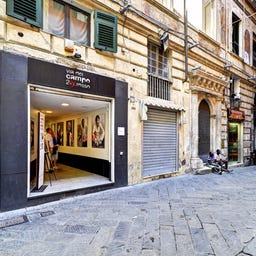
In the historic old town of Genoa, you will find the fascinating museum at Via del Campo 29 rosso, dedicated to the rich tradition of Genoese songwriters. The small shop, once the music store of Gianni Tassio, was a regular meeting place for the famous cantautore Fabrizio De André in the 1960s and 70s and became a cultural hotspot in the city.
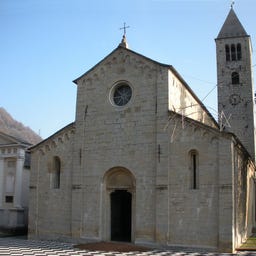
In the picturesque Val Bisagno region of Genoa, you will find the Chiesa di San Siro di Struppa, the most significant historical monument of the valley. Originally built in the 5th century and consecrated in 1025, the church impresses with its simple Romanesque architecture featuring a sandstone façade, rose windows, and a three-nave interior.
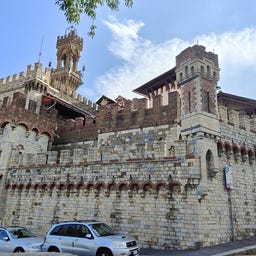
In the elegant neighborhood of Castelletto stands the Castello Mackenzie, a fascinating example of late historicist architecture from the 19th century that combines Gothic and Mannerist elements. The architect Gino Coppedè built the castle between 1893 and 1905 for the client Evan Mackenzie on the foundations of a 16th-century villa, drawing inspiration from significant Tuscan palaces like the Palazzo Vecchio in Florence.
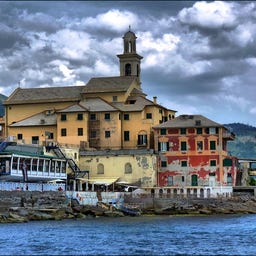
In the picturesque fishing village of Boccadasse, the Chiesa di Sant'Antonio stands out as the only parish church in Genoa dedicated to Saint Anthony of Padua.
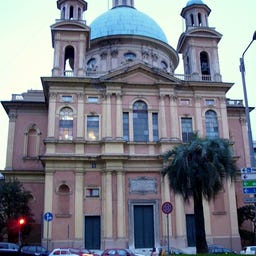
Piazza Alimonda near the Brignole train station is a historic square in Genoa, named after Cardinal Gaetano Alimonda. Here, you will find the distinctive Nostra Signora del Rimedio Church and a memorial stone that commemorates the tragic events during the G8 summit in 2001.

Founded in 1481, the University of Genoa is one of the oldest universities in Italy and has a rich history that dates back to the 13th century. In the magnificent Palazzo dell'Università, which has served as the main building since 1640 based on designs by Bartolomeo Bianco, you will find a modern institution with over 31,000 students today.

In the picturesque hilly landscape of Genoa's Voltri district stands the magnificent Villa Brignole Sale Duchessa di Galliera, surrounded by a 32-hectare park that enchants you with its formal gardens and romantic woodlands.

In the historic Teatro Sant'Agostino, dating back to the early 18th century, you’ll find Italy's first complex of theaters, now operated by the Fondazione Luzzati.
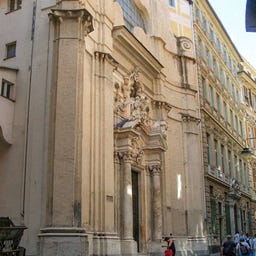
In the Chiesa di San Filippo Neri, you will find one of the most significant examples of Genoese late Baroque architecture, featuring its characteristic concave facade from the 18th century. Founded in 1645 and consecrated in 1721, the church impresses with its single-nave interior, high barrel vault, four side chapels, and magnificent frescoes, including "The Glory of Saint Philip Neri" by Marcantonio Franceschini.

On the historic Piazza Matteotti, which has been the vibrant heart of Genoa since the 16th century, you will find some of the city's most significant buildings gathered together. The impressive Palazzo Ducale with its neoclassical facade from 1778 dominates the northeast side, while the magnificent Church of Gesù, adorned with works by Rubens, graces the southeast side.

The 834-meter-high Monte Fasce is one of the highest peaks in Genoa and offers you a breathtaking panoramic view on clear days, reaching all the way to Corsica, the Maritime Alps, and even Monte Rosa. In the 18th century, the mountain was the scene of fierce battles between French and Austrian troops, especially during the siege of Genoa in 1800 under General Massena.
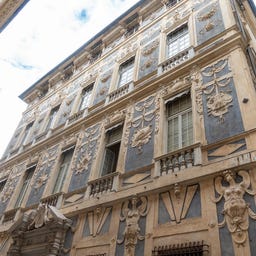
In the magnificent Palazzo Podestà on Via Garibaldi, you will find one of the most impressive noble palaces of Genoa from the 16th century, which has been a UNESCO World Heritage site since 2006. Built between 1559 and 1565 by Giovan Battista Castello and Bernardo Cantone, the palace captivates with its elaborate stucco decorations on the facade and the artistic courtyard featuring a spectacular 18th-century nymphaeum. As one of the famous Palazzi dei Rolli, it served as a noble guesthouse for high-ranking state visitors during the Republic of Genoa, before later passing into the hands of various noble families and eventually to Mayor Andrea Podestà.
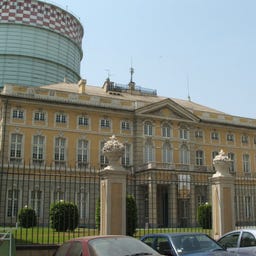
The Villa Durazzo Bombrini in the Genoese district of Cornigliano is considered the most significant example of innovative residential architecture from the 18th century in the former Republic of Genoa. Designed by Pierre Paul De Cotte in 1752, this magnificent building impresses with its French-inspired architecture, featuring a central main building, two side wings, and a spacious courtyard.

In this green refuge in the heart of Genoa, you will find a fascinating blend of botanical garden, art museum, and viewpoint. The Villetta Di Negro, built in the early 19th century by Carlo Barabino, was once a meeting place for artists and intellectuals like Byron, Stendhal, and Paganini.
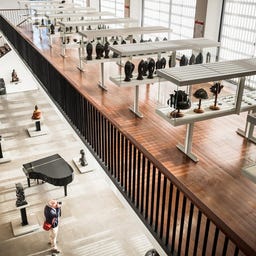
In the picturesque Villetta Di Negro Park, the museum houses one of the most significant collections of East Asian art in Europe - the life's work of the Italian artist Edoardo Chiossone, who lived and worked in Japan for a long time. The collection, consisting of around 15,000 exhibits, includes Buddhist artworks, Japanese theater masks, weapons, armor, and precious ceramics, providing a comprehensive insight into Japanese art and cultural history. After extensive renovations, the museum reopened in 2023 in a modern building specifically designed for the collection. From the newly designed terrace, you can enjoy an impressive panoramic view of Genoa.
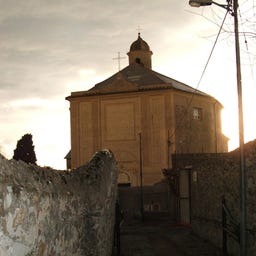
High above the rooftops of Genoa, you will find the Santuario della Madonnetta, a baroque sanctuary from the late 17th century, distinguished by its striking octagonal layout.
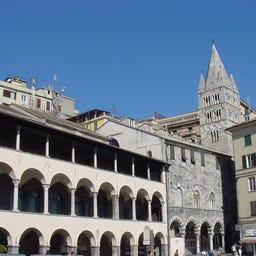
In the medieval port city of Genoa, you will find the Commenda di San Giovanni di Pré, a fascinating complex from the 12th century that once housed Crusaders and pilgrims on their way to the Holy Land. Founded by Guglielmo de Vultabio, the site consists of two overlapping Romanesque churches and a three-story hospital that later also served as a convent.
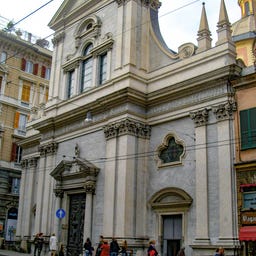
The Chiesa della Consolazione is an impressive Baroque church in the heart of Genoa, with a history dating back to 1475. The church as you see it today was built between 1681 and 1706 and features a blend of Baroque and Neoclassical elements, ten side chapels, and significant artworks, including frescoes by Giuseppe Isola and Giovanni Quinzio.

The Chiesa di San Luca in the historic center of Genoa is an impressive example of Baroque church architecture from the 17th century, founded by Oberto Spinola in 1188. Inside, you will find a Greek cross with an extended nave, adorned with valuable frescoes by Domenico Piola and remarkable marble work by Filippo Parodi.
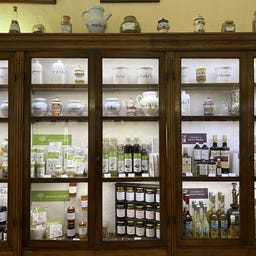
In the oldest historical pharmacy in Genoa, the Antica Farmacia Sant'Anna, founded by Carmelite monks in 1650, it feels like time has stood still. This is the only pharmacy in Italy still run by monks, and it impresses with its well-preserved original furnishings and historical equipment from the 17th century.

High above the Ligurian capital stands the Santuario della Madonna del Monte, a Catholic sanctuary offering stunning panoramic views of Genoa and the Bisagno Valley. The history of this site dates back to the 10th century, with the current Baroque church built between 1654 and 1658, featuring magnificent frescoes by G.B. Semino and Alessandro Franchi.
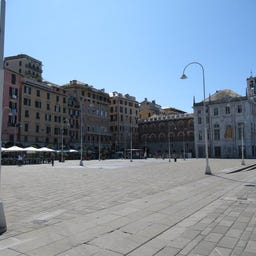
Piazza Caricamento in the historic Maddalena district of Genoa has connected the port with the city since the 19th century and is named after the loading and unloading activities of goods that once took place there. On the approximately 9,000 m² square, which is lined by the magnificent Palazzo San Giorgio, a bronze statue of Raffaele Rubattino commemorates the maritime history.
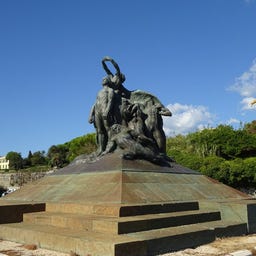
At the historic site from which Garibaldi set off in 1860 with a thousand volunteers for his famous expedition, the impressive Monumento ai Mille in bronze now stands. Inaugurated in 1915, the monument features a dramatic group of sculptures with naked figures rising from the ground, led by Garibaldi himself and crowned by a winged goddess of victory.
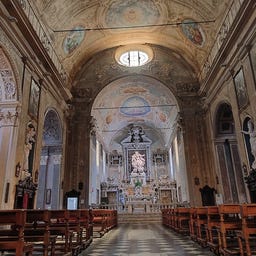
Just a few steps from the center of Genoa, you will find the Chiesa di Sant'Anna, a peaceful oasis surrounded by tall plane trees on a picturesque cobblestone square. This simple Baroque church from the 16th century impresses with its portal made of white Carrara marble and houses remarkable artworks in its six side chapels, including altarpieces by Domenico Fiasella.
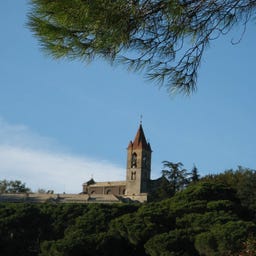
In the Ligurian district of Voltri, you will find the impressive Santuario della Madonna delle Grazie, a church with a history dating back to the 4th century. This three-nave church, also known as San Nicolò, was restored in the neo-Gothic style between 1866 and 1881 and houses a valuable painting of the Madonna and Child from 1502.
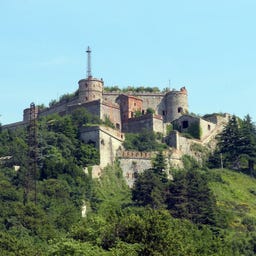
High above Genoa stands the Forte Sperone, an impressive fortress from the early 19th century, located at the intersection of two defensive walls like the bow of a ship. This three-story structure, which dates back to a wooden fortification from 1319, was completed in its current form in 1830 after several renovations and once housed up to 900 soldiers and numerous cannons.

High above Genoa stands the impressive Castello Bruzzo, a magnificent villa from the early 20th century that shapes the skyline with its castle-like architecture and distinctive tower. The architect Gino Coppedè created this masterpiece in Art Nouveau style in 1904, originally known as Villa Micheli, before it was acquired and expanded by Lorenzo Bruzzo in 1912. Inside, you will find intricately designed rooms with stunning frescoes, including the "Hall of Musicians and Dances" featuring its charming scenes, and the central hall with its grand stone fireplace. The rich decorations of stone, marble, and wrought iron, along with the elaborately painted rooms, make the Castello a remarkable example of early 20th-century villa architecture.
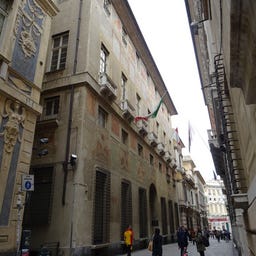
In the magnificent Palazzo Angelo Giovanni Spinola from the 16th century, you will find one of the most significant fresco cycles of the Genoese Mannerists. Built by Angelo Giovanni Spinola, a banker of Emperor Charles V, between 1558 and 1576, this palace is part of the UNESCO World Heritage Site of the Palazzi dei Rolli and once housed high-ranking state guests of the Republic of Genoa.
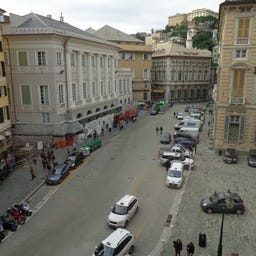
On the Piazza Fontane Marose in the historic center of Genoa, the magnificent streets Via Garibaldi and Via XXV Aprile intersect. The square, established in the 16th century under Doge Luca Spinola, is named after an old fountain from 1206, known for its turbulent waters.
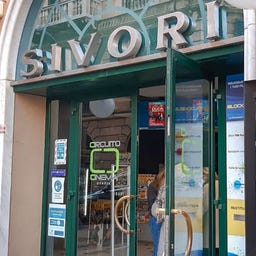
In the oldest cinema in Italy, you dive into over 125 years of film history. The Cinema Sivori, located in the former stables of the magnificent Palazzo Doria-Spinola from the 16th century, screened its first film in 1896 - "The Arrival of a Train" by the Lumière brothers.
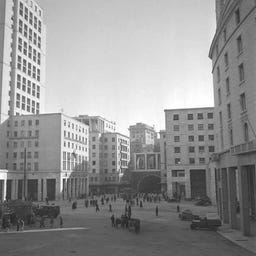
On Piazza Dante in the heart of Genoa, you experience the fascinating contrast between medieval and modern architecture: the Gothic Porta Soprana from the 12th century meets the rationalist skyscraper Torre Piacentini, which was built in the 1930s as the tallest building in Europe.
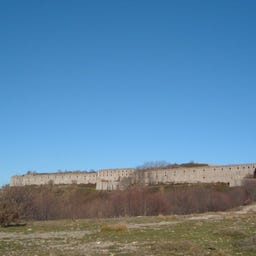
High above Genoa stands the Forte Monteratti, an impressive fortress from the 19th century, built by the Kingdom of Sardinia between 1831 and 1842 as part of the city's eastern fortifications. This historically significant site has served various military purposes over time, from a prison for Austrian conscripts during World War I to an anti-aircraft position in World War II.
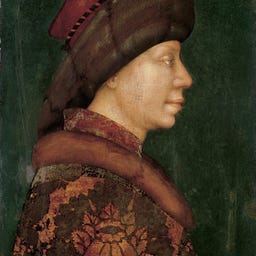
In the three magnificent Renaissance palaces Palazzo Rosso, Palazzo Bianco, and Palazzo Tursi on Via Garibaldi, you can embark on an impressive journey through the art history of Genoa. The museums, united since 2004, showcase significant paintings from the 15th to the 19th century, including works by Caravaggio and Veronese, as well as historical furniture and the famous violin of Niccolò Paganini.
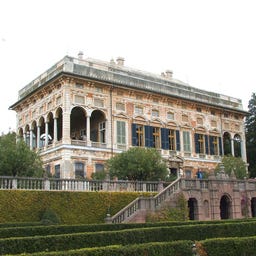
In the prestigious Albaro district of Genoa, you will find the magnificent Villa Saluzzo Bombrini, an outstanding example of late Mannerist architecture from the 16th century. Designed by Andrea Ceresola, this villa, also known as "il Paradiso," captivates with its distinctive double loggia and an elegant Italian garden featuring a bronze fountain.
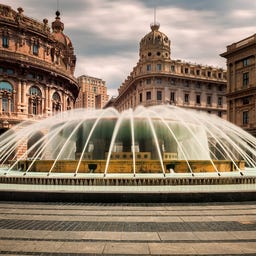
The monumental Fontana di Piazza De Ferrari is the landmark of the central square in Genoa and was built in 1936 based on designs by Giuseppe Crosa di Vergagni. With its impressive bronze main basin supported by six columns and an 11-meter high water jet, it has always captivated both locals and visitors.
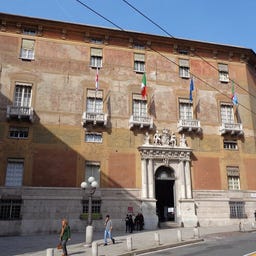
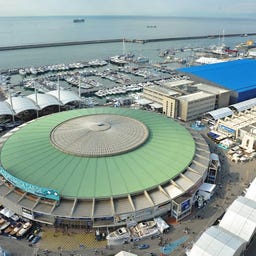
The Palasport di Genova, completed in 1963, was Europe's first major prestressed concrete structure and, with 15,000 seats, became one of Italy's most significant indoor sports venues. In this impressive arena, not only sports legends competed during European and World Championships, but also music icons like The Beatles, The Rolling Stones, and Elton John performed.
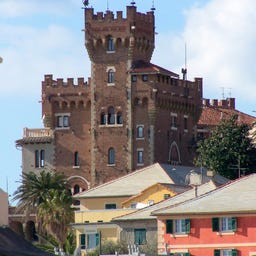
High above Genoa stands Castello Türcke, a historic residence from the early 20th century located in the Italian region of Liguria. The Florentine architect Gino Coppedè designed this castle-like villa in 1903 for the Swiss engineer Giovanni Türcke, drawing inspiration from the style of Castello Mackenzie, which he had previously created in Genoa. After Türcke's death in 1917, W. Homberger acquired the estate and significantly expanded the associated garden through additional land purchases in the 1920s.

The impressive Loggia dei Mercanti in the historic center of Genoa reflects the city's former significance as a trading hub. The current structure, built in the late 16th century and designed by Andrea Ceresola and Giovanni Ponzello, captivates with its vaulted ceiling supported by pairs of columns and intricate reliefs by Taddeo Carlone.
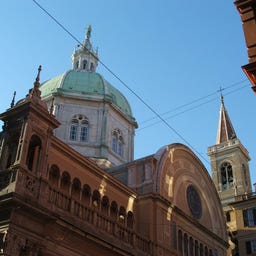
The impressive Basilica di Santa Maria Immacolata in the Genoese district of Castelletto is one of the most significant examples of neo-Renaissance church architecture in the city. Dedicated as the first church after the papal proclamation of the dogma of the Immaculate Conception of Mary in 1854, it was built between 1856 and 1873 based on designs by Domenico Cervetto.
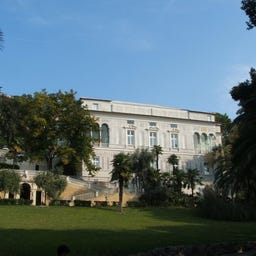
The Villa Imperiale, built in the early 16th century by Lorenzo Cattaneo, is one of the oldest Renaissance villas in Genoa and sits in the middle of a public park with geometrically designed terraces.

In the heart of Genoa's historic center, you discover Piazza San Matteo, an elevated square from the 13th century, surrounded by medieval palaces of the Doria family. The church of the same name, originally built in 1125 by Martino Doria and rebuilt in the Gothic style in 1278, captivates with its distinctive black-and-white striped marble facade.
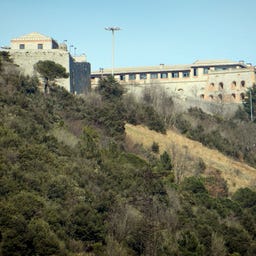
High above Genoa stands the Forte Begato, an impressive fortress from the early 19th century that once protected the city as part of the "Mura Nuove." Built between 1818 and 1836, it was designed to accommodate up to 800 soldiers and played a significant military role in both World Wars—first as a prisoner-of-war camp and later as an anti-aircraft position.

In the Chiesa di Santa Maria della Cella in the Genoese district of Sampierdarena, a neoclassical façade from the 19th century combines with a magnificent Baroque interior. The church, built by the noble Doria family between 1206 and 1213, stands on the foundations of an early medieval predecessor and houses the historic Kapelle Sant'Agostino, which was rediscovered only after World War II.
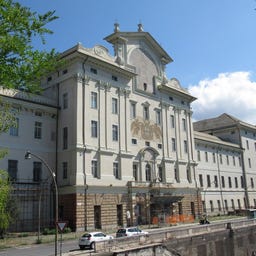
In the Castelletto district of Genoa stands the impressive Albergo dei Poveri, whose construction began in 1652 under Emanuele Brignole as a shelter for the poor and stretched over nearly 200 years due to plagues and wars. This monumental complex, with its distinctive façade, two protruding wings, and four large courtyards, houses a remarkable church where you can admire masterpieces by Domenico Piola and Pierre Puget. Today, the former "Palace of the Poor" is part of the University of Genoa, while its rich art collection, including a significant polyptych by Pier Francesco Sacchi, reflects the tumultuous history of the building.
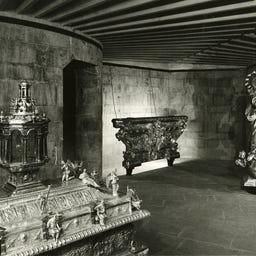
In the underground spaces of the Cathedral of San Lorenzo in Genoa's old town, you will find a fascinating museum that has housed around 50 significant religious art treasures since 1956. The collection, which dates back to the 12th century, includes the legendary "Sacro Catino," considered a relic of the Last Supper, as well as precious Byzantine cross relics.

In the magnificent Palazzo Balbi-Senarega from the 17th century, you will find one of the most impressive examples of Baroque architecture in Genoa, which has been a UNESCO World Heritage site since 2006. The palace, built by architects Bartolomeo Bianco and Pietro Antonio Corradi for the wealthy Balbi brothers, captivates with its elaborate frescoes by renowned artists like Valerio Castello and Domenico Piola.
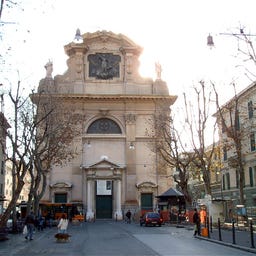
The Basilica di Nostra Signora Assunta, built in the early 17th century, dominates the central square in the Genoese district of Sestri Ponente with its impressive facade, completed in 1932. Inside, you’ll find a single nave that stretches over 38 meters, adorned with stunning frescoes and marble works by notable artists like Giulio Benso and Domenico Piola.
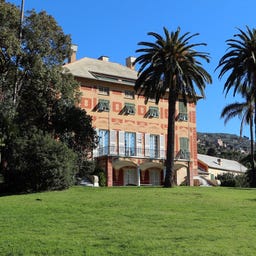
In the picturesque Nervi Parks of Genoa, you will find the Villa Grimaldi Fassio, a magnificent estate from the 16th century with an intriguing history. Once a summer residence, it was extensively renovated by the Fassio Tomellini family in 1956 and has housed the valuable Frugone Collections since 1993.
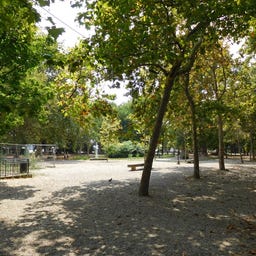
On a hill in the center of Genoa, you will find the Spianata dell'Acquasola, a historic terrace with expansive parklands and elegant buildings. The park, beautifully designed in the 19th century by architect Carlo Barabino, has a rich history, from a dump in the 16th century to a mass grave during the plague epidemic of 1657.
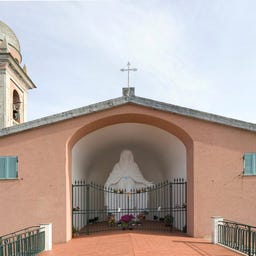
High above the coast, you will find the Santuario di Nostra Signora del Gazzo, which began its history as a pilgrimage site in 1645 with the erection of a large wooden cross. During a plague epidemic, a statue of the Madonna was placed here in 1657, followed by the construction of a chapel starting in 1660.
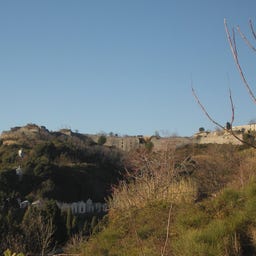
High above the Polcevera Valley stands the Forte Tenaglia, an impressive fortress from the 17th century, named for its pincers-like architecture. Built in 1633, this fortress was not only part of the historic Mura di Genova, but throughout its history, it served as a defensive structure, a military prison, and even an anti-aircraft position during World War II.
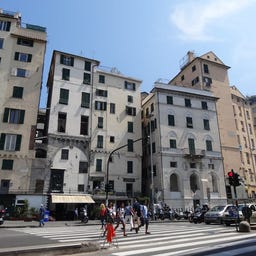
Located at the historic waterfront of Genoa, Piazza Cavour has a rich history that dates back to Roman times, when an amphitheater and the governor's palace stood here. In the Middle Ages, the square was an important starting point for the expeditions of the Republic of Genoa and housed shipyards.
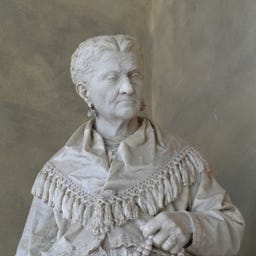
In the Monumental Cemetery of Staglieno in Genoa, you will find one of the most remarkable tomb monuments of the 19th century: the lifelike statue of Caterina Campodonico, a simple street vendor of necklaces and sweet bread.
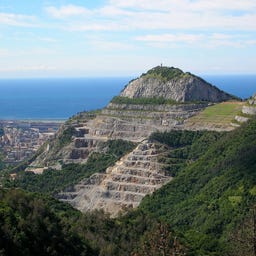
On Monte Gazzo, a prominent hill in the Genoese district of Sestri Ponente, you can expect an intriguing blend of nature and cultural heritage. The Santuario di Nostra Signora del Gazzo at the summit serves as a reminder of the plague era in the 17th century, when the local population sought refuge here.
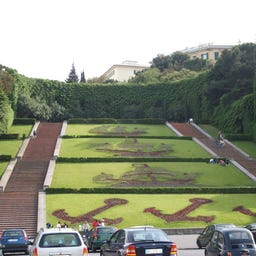
The monumental Scalinata delle Caravelle has connected Piazza della Vittoria with the Carignano district of Genoa since the 1930s. Designed by Alfredo Fineschi and his father Pietro, the staircase impresses with its distinctive layout featuring two wide ramps and a sloped flower bed in the center. Here, three segments symbolize the caravels of Christopher Columbus, adorned with maritime motifs and stylized anchors.

On the trapezoidal Piazza della Nunziata in the Prè district, you encounter an impressive ensemble of historic palaces that are part of the UNESCO World Heritage. The history of the square dates back to the 12th century when a defensive zone was established here for the "Mura del Barbarossa," which later also served as a training ground for crossbowmen.
